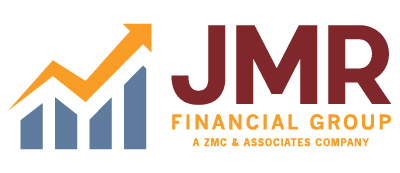By Nathan A. Madill, APA, IAR
Sobering Stats to consider:
An estimated 75% of Americans are behind on their retirement planning, only 6% of all income was contributed to 401(k)s in 2017, the average monthly social security payment to retirees was $1,386 in 2017 and $17,000 was the median retirement savings for families aged 55-61.
Whether you’re a business owner or an individual investor, chances are you have numerous questions surrounding saving for retirement. Some common questions we hear are “How do I start planning for retirement?” “How much do I need to save?” “When should I start drawing Social Security?” “Will I have enough funds to last my entire retirement? “Do I have the right retirement plan or retirement account?” “How will this affect my tax situation?”
Employers should consider using Employee Benefit Plans or Retirement Plans to reduce business and individual income tax liabilities, increase retirement plan funding for themselves and their employees and to promote employee retention while reducing labor costs. SEP IRAs and SIMPLE IRA Plans are a great fit for Sole Proprietors and small family owned businesses as these plans typically don’t have administrative expenses, making them very cost effective. These plans are easy to setup and communicate to employees. Larger organizations needing greater flexibility, options and higher contribution amounts would tend to use a 401(k) Plan.
Most individuals don’t have the desire, time or expertise to manage their own assets or portfolio. For this reason, it is a good idea to hire a financial advisor that specializes in Investment Management. The key is to find a Fee Based Investment Advisor that is independent and who can factor in the income tax effect as part of their long-term strategy.
Not all financial advisors are the same. It’s important to know the difference between a “Fee Based” financial advisor and a “Commissions Based” financial advisor as the difference is how they get compensated for their services. As a “Fee Based” advisor the fee structure is simple – the fee is directly tied to the value of the client’s portfolios. Fee based advisors income is increased if their investment management increases the value of the clients’ portfolios. Whereas a “Commissions Based” advisor gets compensated through commissions when an account is opened or when securities are bought and sold. With a “Fee Based” advisor, a client never has to worry why funds are being bought or sold as the only reason to do so is to improve the portfolio returns.
Some advisors are independent, meaning they don’t represent any one particular company or fund family and can select the best performing funds from a pool of thousands of funds, while other advisors are pressured to sell or push their firms in house proprietary funds. Another important attribute is finding an Investment Advisory firm that incorporates tax planning into its investment management strategies.
So how much is needed for retirement?
Individuals should contribute 15% of their compensation while they are working to accumulate enough wealth to carry them through their retirement years. Retirement dollars are getting squeezed by many factors: (1) People are living a lot longer (age 76 for males & 81 for females), (2) health care costs are generally more expensive than people had planned, and (3) most people tend to draw down or withdraw money too quickly or at too high of an amount which depletes their assets too early.
Steps to take control of your retirement: (1) Get professional help to manage your retirement accounts and help plan for retirement and future tax needs. Not only will this help ensure you are maximizing your retirement planning possibilities, it will also ensure you are not overpaying your tax liability. (2) Pay yourself first each month by contributing to an IRA or a retirement account at work, before you pay any bills. This way you are making your retirement a priority rather than an afterthought. (3) Take the 1% challenge by raising your deferral or retirement contribution amount by 1% annually. Most individuals will not notice a difference in their take home pay from year to year but the big difference will be in the amount they are able to amass in their retirement account by the time they retire.
To maximize your retirement savings, start early, increase your retirement contributions annually, and work with an independent “Fee Based” advisor that will consider income tax implications as part of your long-term investment strategy.
Now dream big and set your retirement goals – Happy Investing!



